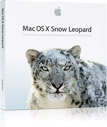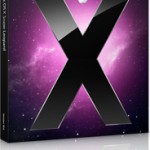September 14, 2009 FOR IMMEDIATE RELEASE
Haiku Project Announces Availability of Haiku R1/Alpha 1
September 14, 2009 – The Haiku Project is proud to announce the availability of Haiku R1/Alpha 1, the first official development release of Haiku, an open source operating system that specifically targets personal computing. The purpose of this release is to make a stable development snapshot of Haiku available to a wider audience for more extensive testing and debugging. This will help the Haiku development team identify and address bugs, and thus improve the quality of the system as development keeps advancing towards the subsequent development milestones. Bugs found in Alpha 1 should be reported to the Haiku bug tracking system at http://dev.haiku-os.org.
This first alpha release of Haiku comes approximately eight years after the project kicked off, and is the direct result of the dedication of many volunteer contributors from all over the world. Special thanks go to former Project Leader Michael Phipps, as well as to the small but very resilient group of core developers who stuck with the project throughout the years.
Alpha 1 will be followed by additional development milestones, eventually leading to the long-awaited final release of Haiku R1. These subsequent official milestones will be announced as the release dates are defined by the Haiku development team.
Haiku R1 Alpha 1 Availability
Download ISO/raw/VMWare image: http://haiku-os.org/get-haiku Purchase CD (from the end of September): Haiku Store
About the Haiku Project
The Haiku Project is a volunteer-based initiative whose goal is to develop and promote the adoption of Haiku, an open source operating system for personal computing. The project was kicked off in August 18, 2001, with the name of OpenBeOS and under the direction of former Project Leader Michael Phipps. At present, the Haiku Project relies on a global community with members that contribute in all areas of the project, including but not limited to development, testing, documentation, on-line content, support, public relations and general advocacy. The project is also backed by Haiku Inc., a US-based not-for- profit organization founded in 2003 to assist the Haiku Project in reaching its goals.
About the Haiku Operating System
Haiku is an open-source operating system that specifically targets personal computing. The main goal of Haiku is to provide computer users of all levels a system that is fast, efficient, simple to use, easy to learn and yet very powerful. In order to reach its goal, Haiku reimplements and builds upon the ideas, technologies and end user experience introduced by the Be Operating System.
For more information: http://haiku-os.org Press contact: Jorge G. Mare — jorge.mare@haiku-os.org





